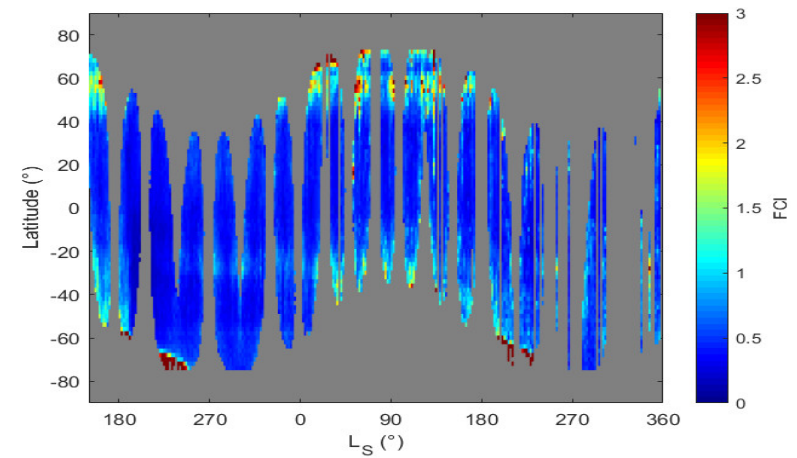Remote Sens (2022); https://doi.org/10.3390/rs14174143
Luca Ruiz Lozano, Özgür Karatekin, Véronique Dehant, Giancarlo Bellucci, Fabrizio Oliva, Emiliano D’Aversa, Filippo Giacomo Carrozzo, Francesca Altieri, Ian R. Thomas, Yannick Willame, Séverine Robert, Ann Carinne Vandaele, Frank Daerden, Bojan Ristic, Manish R. Patel and José Juan López Moreno
As part of the payload of the 2016 ExoMars Trace Gas Orbiter (TGO) mission, the Nadir and Occultation for MArs Discovery (NOMAD) suite instrument has been observing the Martian atmosphere since March 2018. NOMAD is mainly dedicated to the study of trace atmospheric species taking advantage of a high-spectral resolution. We demonstrate that when NOMAD is observing in nadir mode, i.e., when the line-of-sight points to the centre of Mars, it can be also exploited to detect ice. In this study we present a method based on the investigation of nadir observations of the NOMAD infrared channel, acquired during Mars Years 34 and 35 (March 2018 to February 2021). We take advantage of the strong water ice absorption band at 2.7 µm by selecting the diffraction orders 167, 168, and 169. We derive the Frost and Clouds Index (FCI), which is a good proxy for ice mapping, and obtain latitudinal-seasonal maps for water ice clouds. FCI is sensitive to the Polar Hood clouds. Nevertheless, detections in the Aphelion Cloud Belt (ACB) are limited. This is consistent with previous observations showing different physical properties between the two main Martian atmospheric structures and making the ACB less detectable in the infrared. We hence derive the infrared nadir channel sensitivity limit for the detection of these clouds.

Latitudinal-seasonal map of FCI (frost-cloud index). Observations cover MY34, from LS = 150◦ to 360◦, and all MY35

